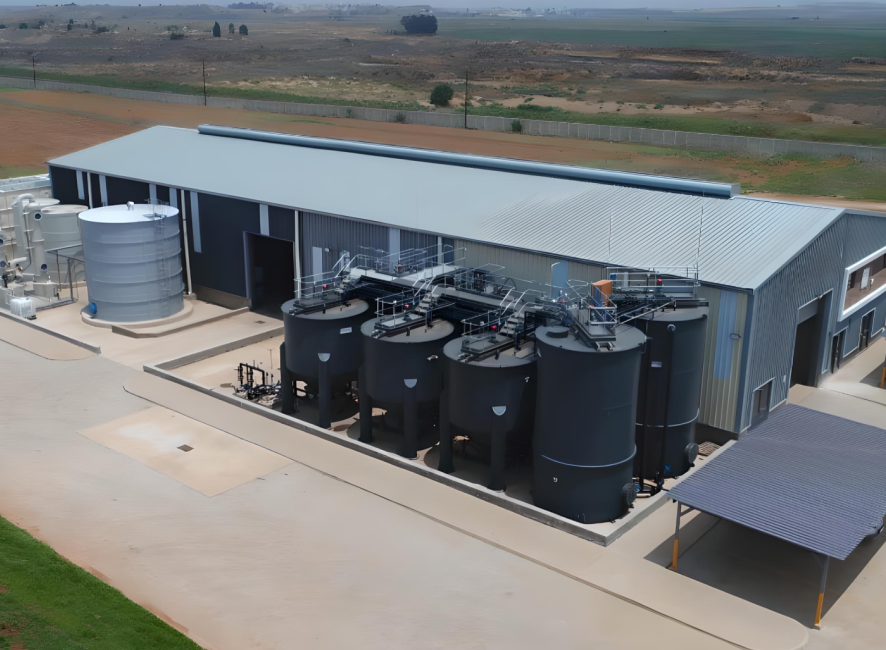South Africa’s waste landscape is changing , and the stakes have never been higher. In the Era of Responsibility, we’re no longer just reacting to environmental challenges; we’re reimagining how we prevent them. One of the most pressing issues? Liquid waste. From industrial by-products to hazardous leachate, the question is no longer where we dump it – but how we transform it.
That’s what makes Interwaste’s Effluent Treatment Plant (ETP) so significant. It’s not a future idea. It’s a present-day solution to one of South Africa’s most under-addressed waste problems, one that’s reshaping how we manage water, waste, and accountability.
The State of Water in South Africa
South Africa is one of the 30 driest countries on Earth, and its water crisis is growing more severe by the year. According to the Department of Water and Sanitation, national demand is expected to outpace supply by 17% by 2030, driven by population growth, urbanisation, and poor resource management. This stress is compounded by widespread pollution of rivers and dams through industrial effluent and untreated municipal wastewater, with over 56% of wastewater treatment works currently classified as being in poor or critical condition. Climate variability is also intensifying the crisis, particularly in drought-prone regions such as the Eastern Cape, Northern Cape, and Western Cape. Yet despite these mounting pressures, South Africa’s uptake of water reuse and recycling remains limited, leaving millions vulnerable. Recent data shows that more than 3 million people still rely on water sources considered to be below acceptable health and safety standards. In this fragile context, how we manage waste, particularly liquid waste, has become directly linked to national water security and the wellbeing of communities across the country.
Interwaste’s ETP: A Bold Step Forward
Recognising the need for meaningful intervention, Interwaste launched a first-of-its-kind Effluent Treatment Plant at its Klinkerstene site – a strategic investment designed to address both industrial and leachate-based liquid waste. The plant:
- Processes 43 million litres of liquid waste annually
- Recovers up to 90% of that as clean, reusable water
- Produces 36 million litres of water for safe reuse or compliant discharge
- Meets and exceeds Department of Water and Sanitation discharge requirements
Unlike conventional treatment works, the ETP is built to manage complex waste streams – from acidic effluents and heavy metals to chemical runoff – ensuring that water is recovered without harming downstream environments.
A Model for the Present – and the Sector
The ETP is a blueprint for how the waste sector must evolve in this new era. It is environmentally responsible, protecting wetlands, aquifers, and downstream rivers from hazardous waste. It is economically efficient, reducing reliance on municipal water supply during an era of rolling shortages. It is regulator-aligned, supporting the national ban on liquid waste to landfill (effective 2019) and aligns with the National Waste Management Strategy 2020. And perhaps most importantly, it is circular in mindset – turning “waste” into water, one of our most critical resources.
In a country where over 60% of landfill sites do not have leachate treatment infrastructure, this level of intervention sets a new benchmark.
The Bigger Picture: One Plant, Many Lessons
While the ETP is a milestone, it’s not the only solution. South Africa’s waste challenges – particularly around water, require a multipronged approach. This includes increased public-private collaboration, decentralised community-based treatment, incentives for industrial water reuse, and improved regulatory enforcement.
Yet the ETP stands as proof that when we stop waiting for ideal conditions and start innovating within constraint, we unlock new pathways to sustainability.
Reimagining Waste, Reimagining Responsibility
To reimagine waste is to rethink what’s possible. In the Era of Responsibility, it is no longer enough to acknowledge the problem – we must act. Interwaste’s Effluent Treatment Plant is more than a facility; it’s a symbol of progress, proving that even the most complex waste streams can be transformed into value.
But true impact lies in replication, collaboration, and sustained momentum. A single innovation will not fix the system, but it can spark the movement needed to change it. By investing in solutions that restore, recover, and reimagine, we move beyond intention into impact.
Let this be the moment we stop treating water and waste as separate issues. Let it be the moment we choose to lead, innovate, and take accountability, not just for today, but for generations to come.
Waste is no longer something to discard. It is something to solve.
.jpg)

SUBMIT YOUR COMMENT